Łańcut 2023-11-16
Łańcut railway station.
Geographic coordinates: 50.081N 22.227E. Elevation 191 m.
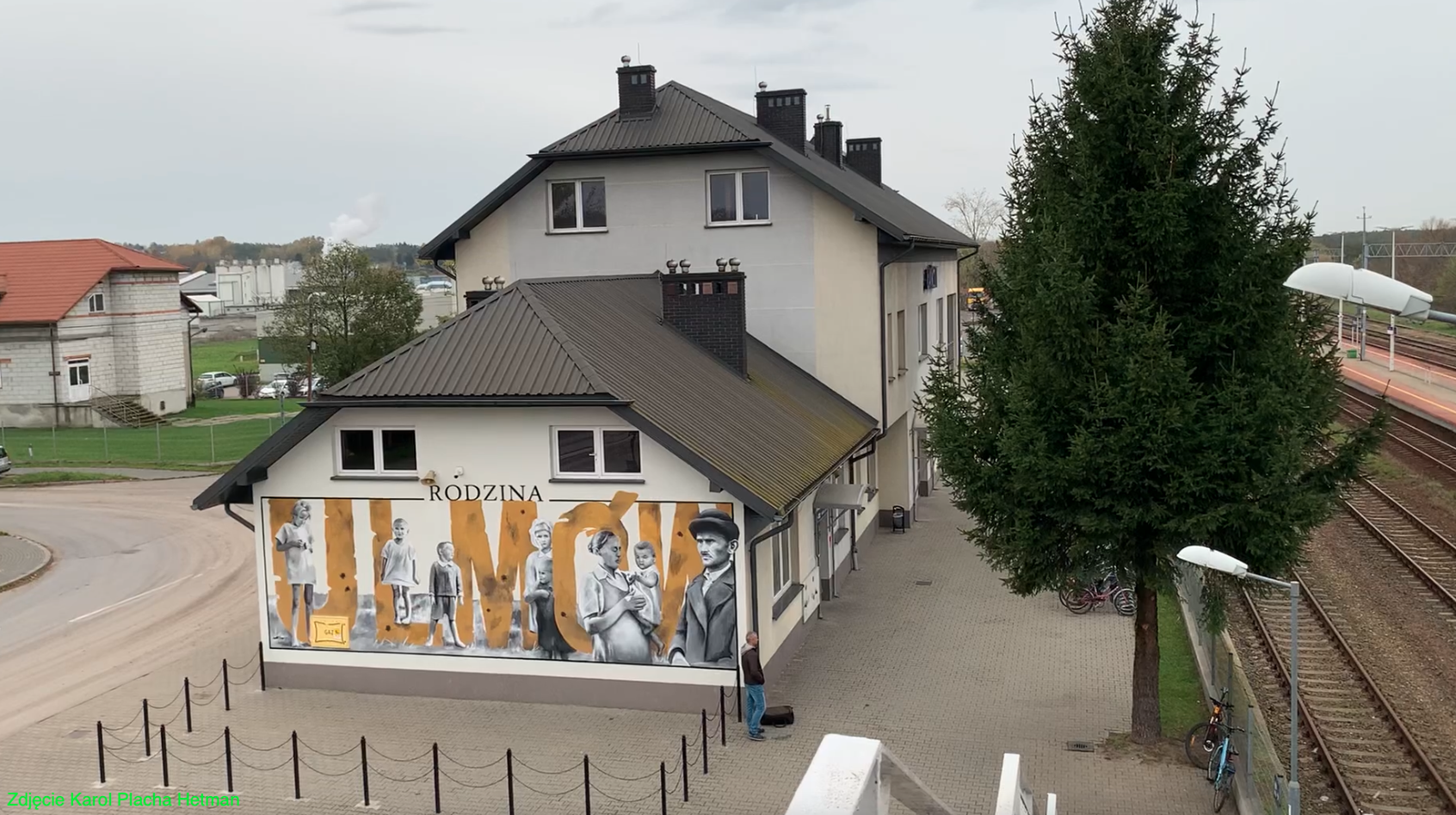
Photo description: The mural shows the Ulma family murdered by Germans for hiding Polish citizens of Jewish origin. The mural was fenced because there is no shortage of Volksdeutsche in Poland who would destroy the mural.
City of Łańcut.
Łańcut is a district town in Poland, in the Podkarpackie Voivodeship, on the northern edge of the Rzeszów Podgórze, in the Wisłok River valley. From Łańcut to: Rzeszów is 18 km, Przemyśl is 77 km, Kraków is 182 km, Warsaw is 327 km. The area of the city is 19 km2. The city's population is 17,770 people in 2019. Łańcut is historically located in the Przemyśl region.
The city was founded by King Casimir the Great. The city was founded in 1349 and confirmed in 1369. In the early Middle Ages, there was already a fortified town here, on the trade route from Russia to Silesia. The owner of the settlement was Otto from Pilcza. The next owners were: the Pilecki family, the Stadnicki family, and from 1629, the Lubomirski family, who built a large castle here. The fortified castle was later transformed into a palace. From the 19th century until 1944, the castle was owned by the Potocki family.
Since the 15th century, crafts and trade have developed here. In 1635, Łańcut obtained the right to store. During the Swedish Deluge, the city was destroyed by the Swedes and Hungarians. In the 18th century, the silk weaving industry developed in the city. In the period 1772-1918, during the partitions of Poland, Łańcut was under the Austrian partition, becoming part of Galicia. In the Second Polish Republic, Łańcut was a strong center of the folk movement. From 1939, during the Germanic occupation, there was a mass extermination of Polish citizens. Poles and Jews, Polish citizens, were deported and murdered. In 1945, Łańcut and all of Poland found themselves under the Soviet rule. In 1989, Poland managed to gain sovereignty. Currently (2023), Poland is threatened by a new shoe, this time a Prussian one.
Roman Catholic Church; Two deaneries belonging to the Archdiocese of Przemyśl are based in Łańcut: Deanery of Łańcut I with parishes: Parish of St. Stanisław Bishop and Martyr (Parish Parish) with the parish church, Parish of St. Michael the Archangel. Łańcut II Deanery – parishes: Parish of Christ the King, Parish of St. Józefa – Podzwierzyniec.
The electromechanical industry (Fabryka screw "Śrubex" SA, currently "Koelner" SA), clothing and food industry (Łańcucka Fabryka Wódek "Polmos Łańcut", dairy) developed in Łańcut. There is a sawmill, a brickyard, a printing house and others. "Techgraf" Printing Plant, "Vipo" Clothing Plant, Lancerto S.A. There are secondary schools in the city. Łańcut is also a center of tourism, culture and history; Palace in Łańcut, Ulma family museum in Markowa. Łańcut is home to one of the most magnificent magnate residences in Poland, which is currently a major tourist attraction.
Łańcut is very well connected from east to west. There is National Road No. 94, Motorway A4 (E40), Provincial Roads: No. 881 and No. 877. The A4 motorway connects Western Europe with (currently 2023) Ukraine. There is an important railway line Kraków Główny - Przemyśl.
PKP Łańcut.
The railway station in Łańcut was established in 1859, when the railway line on the Rzeszów - Przemyśl section was put into operation.
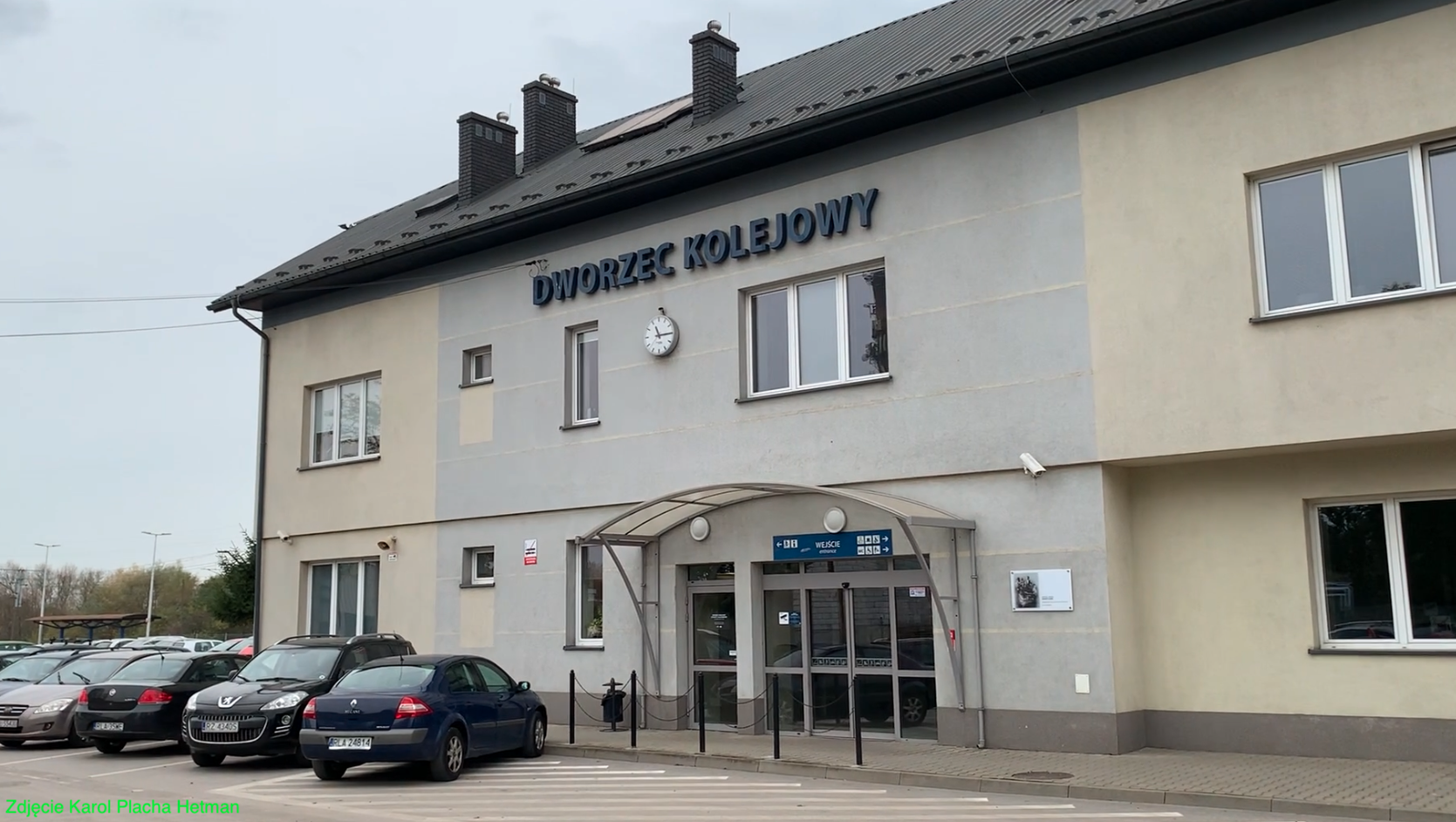
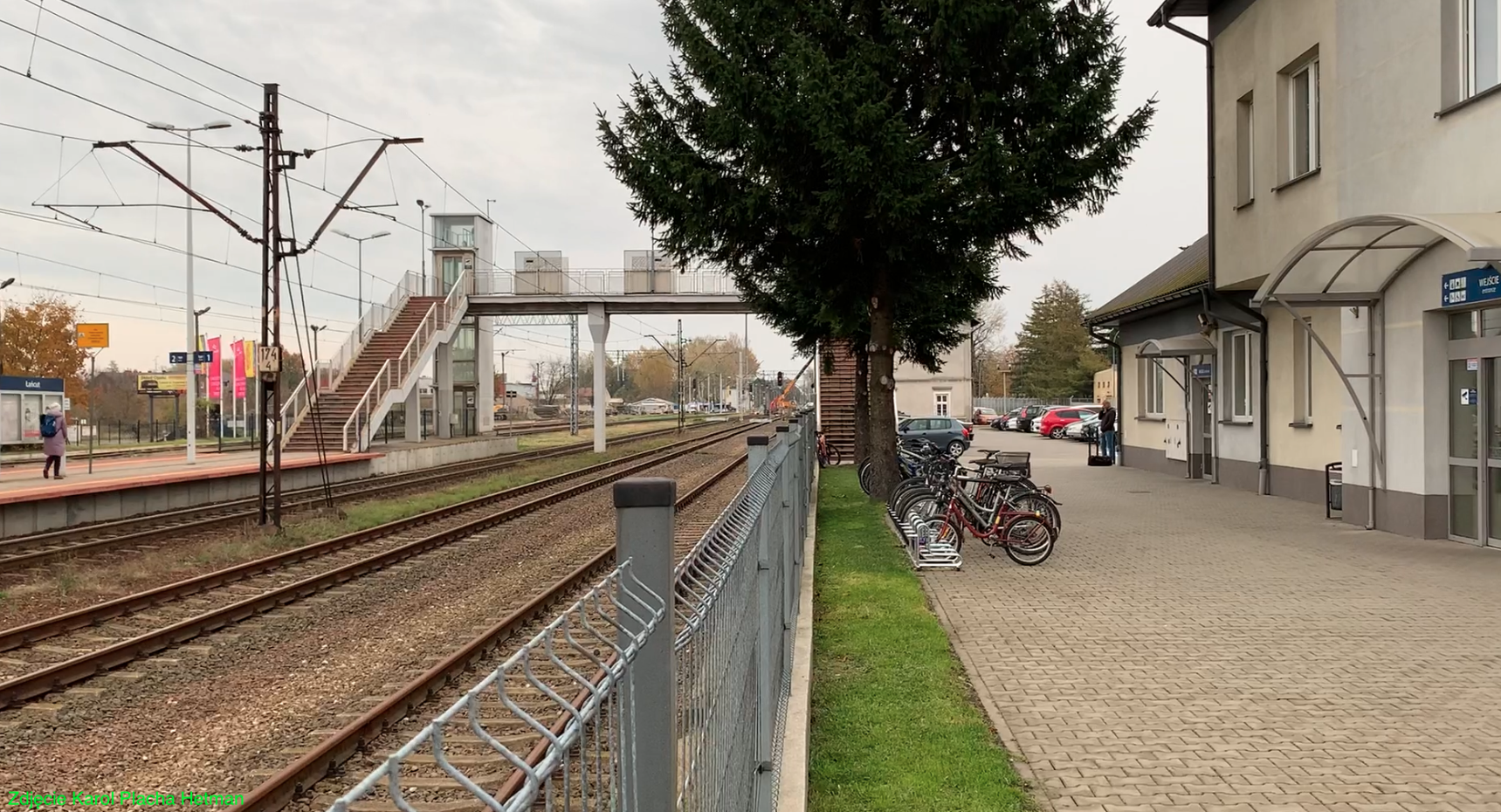
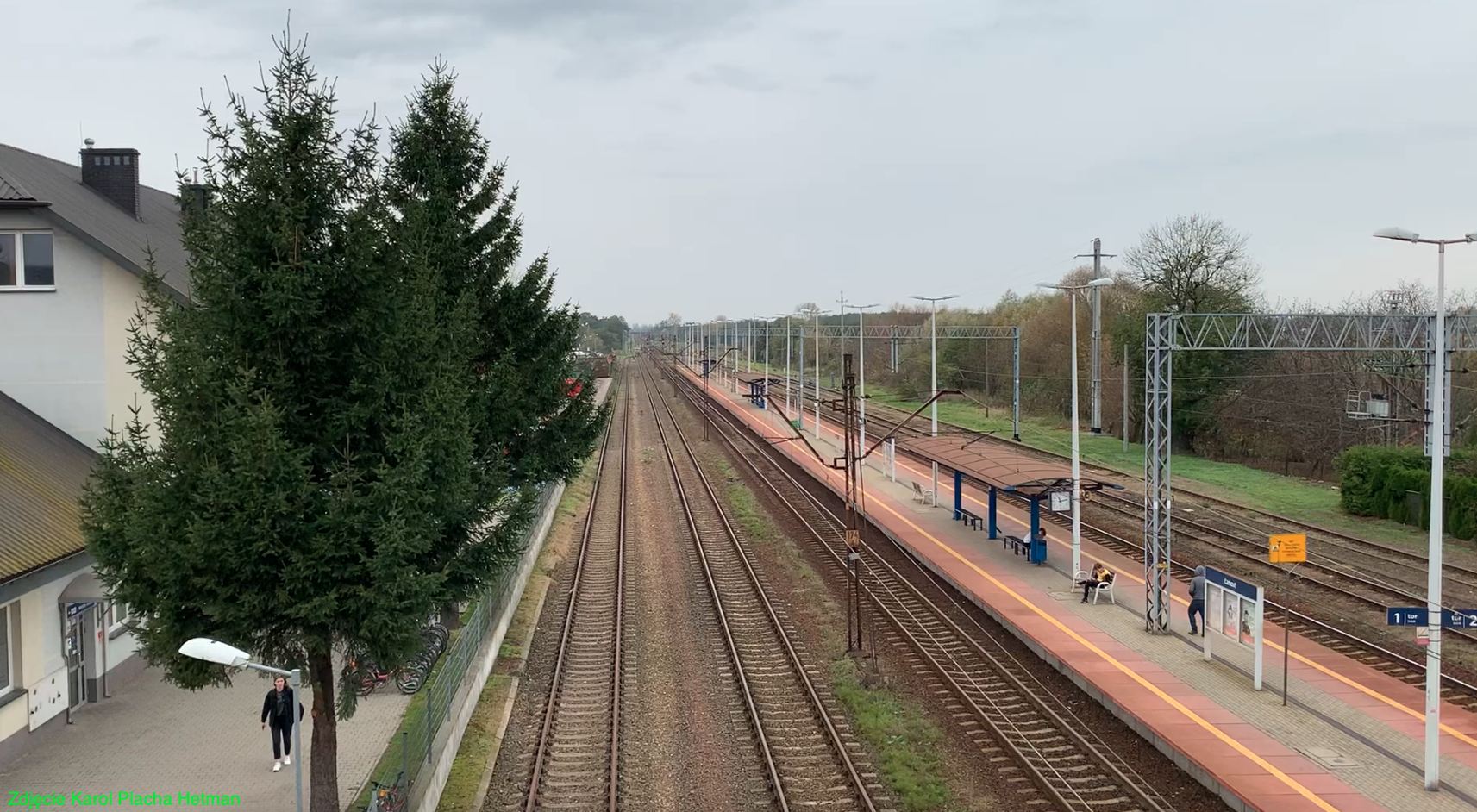
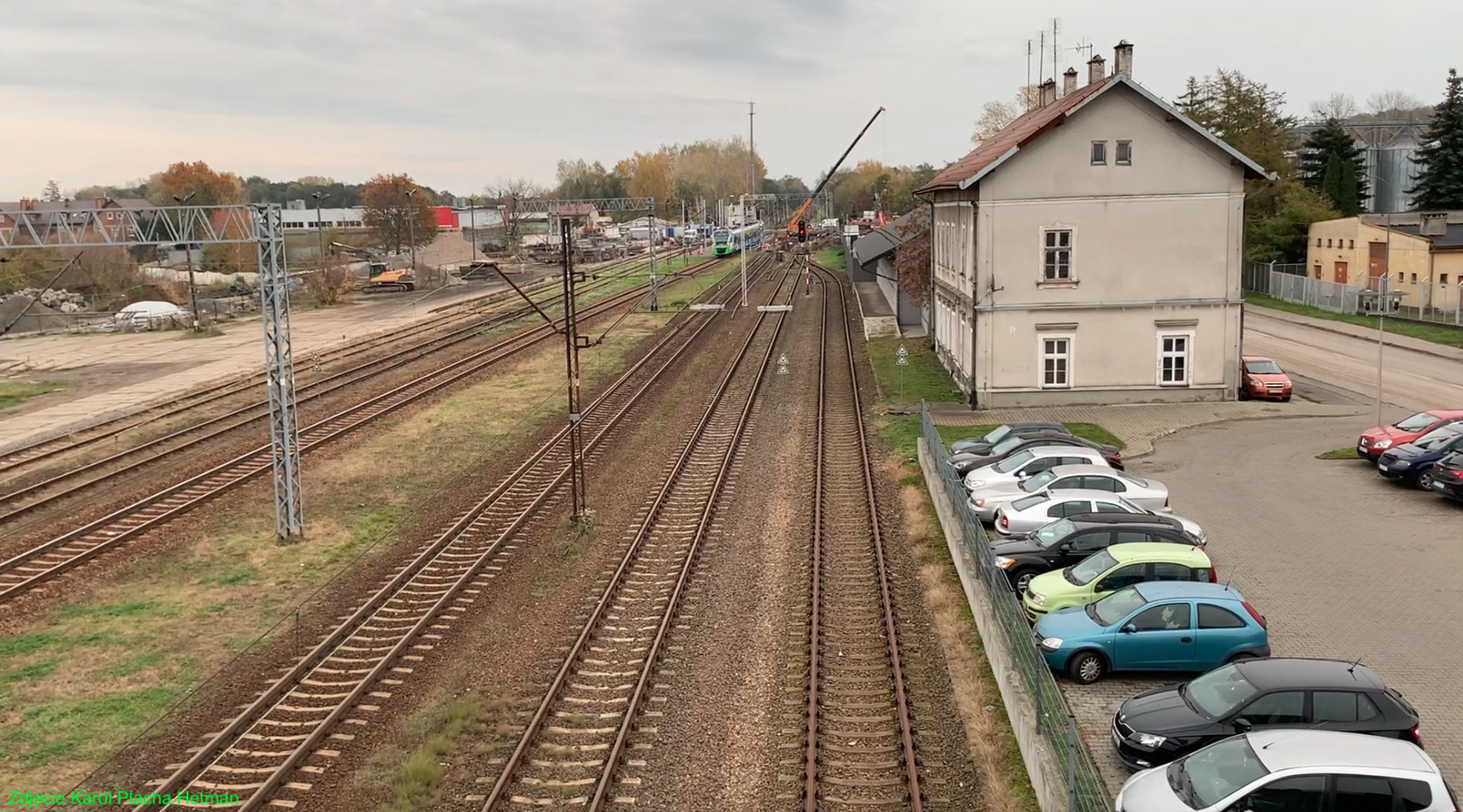
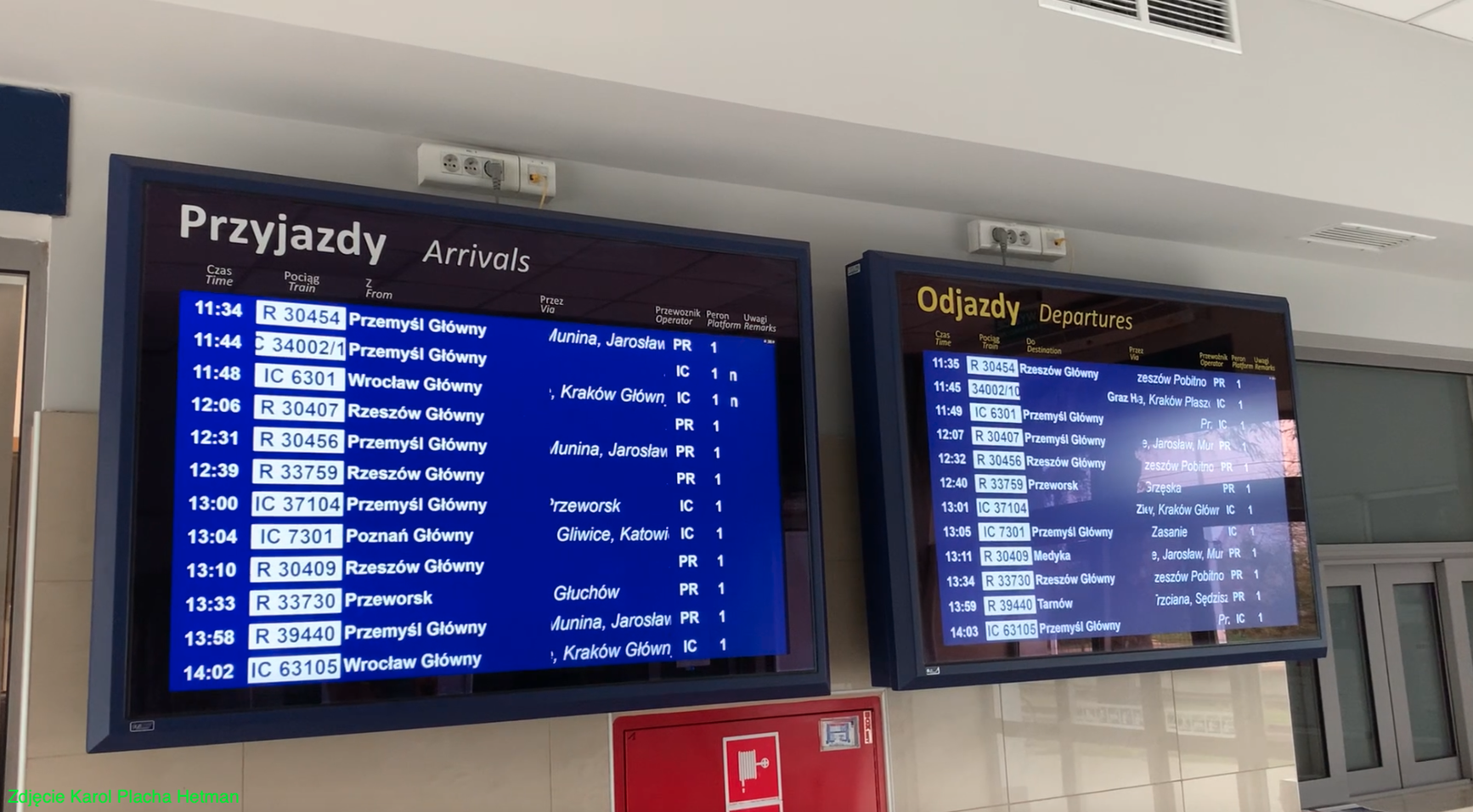
The first station building was built as a single-story building with a central superstructure and was covered with a gable roof finished with ceramic roof tiles. In 1915, as a result of hostilities (Muscovites - Austrians), the station was burned down and then demolished. In 1918, a makeshift station building was built. In 1988, a new station was built in the style of socialist modernism. The building was a cube, with a flat roof and an annex. The annex housed a shop and service points. The building's decoration was a wide cornice that surrounded the roof of the annex and partly the main station building. The cornice was made of trapezoidal sheet metal, galvanized and painted brown. The station was plastered in a sandy-yellow color.
In the 1970s, a footbridge was built over the tracks for passengers to safely reach the platform. At that time, the platform was of the low type (about 0.25 m from the rail head) and its surface was asphalt. The concrete edges of the platform were painted white. Additionally, there was a yellow warning line. There were three bus shelters on the platform to protect passengers from snowfall. There were benches, garbage bins, sound system and lighting.
On the southern side of the station plane, west of the station, there was a side ramp at the loading yard, approximately 240 m long. There were six tracks at the station. There were two sidings leading out of the station. A siding on the north side leads to the vodka factory and the screw factory (in 2023, in use). The southern siding led to the heating plant (in 2023, not used).
In the period 2010-2012, the station was renovated and rebuilt. Currently, the building refers to the old style. The main building and the annex have a hipped roof covered with graphite sheet metal. The building currently has three usable floors. The building's facade is currently sand and gray. There are inscriptions on the building's facade; Railway Station, Łańcut (from the track side) and clock. The interior includes two ticket offices, a waiting room and modern toilets. The building received new installations; electricity, water, sewage, air conditioning. Architectural barriers were removed. The building houses railway services and railway security services. The main entrance to the building opens automatically, from Kolejowa Street. There are two exits from the tracks towards the platform. One exit opens automatically. An additional roof covered with polycarbonate was installed over the entrances.
The ceremonial opening of the station took place on May 29, 2012. The cost of the reconstruction amounted to approximately PLN 3 million. On August 30, 2023, the city authorities decided that the heroic Ulma family, brutally murdered by Germans and hiding Polish citizens of Jewish origin, became the patrons of the station. During the naming ceremony, a plaque dedicated to the patrons and a mural on the eastern wall of the station were unveiled.
Since 2013, the station plane and platform have been renovated. The subgrades, tracks and the entire traction network were replaced. The renovation was carried out in two stages; In the first stage, on the southern side. In the second stage on the north side. During the renovation, the platform was moved westwards (Rzeszów). The new platform was raised, widened and extended to 290 m. It was equipped with 1 m wide edge boards, burgundy in color and with a white warning line. The rest of the platform was paved with concrete paving stones. A linear rainwater drain was installed. Three shelters with benches, lighting, an audio system and railway information boards were installed. At the same time, two elevators were installed for passengers in wheelchairs, with strollers, bicycles and larger luggage. Elevators run from ground level to the footbridge level. At the same time, the footbridge itself was renovated.
In the eastern head of the railway station there is the "Łn" signal box, which also serves the road-rail crossing barriers along Podzwierzyniec Street, Voivodship Road No. 877. Kolejowa Street runs alongside the station, on the southern side. Currently (2023) the street is unoccupied on the section between the station and Podzwierzyniec Street. This is due to the construction of a railway viaduct over the tracks and the future liquidation of the rail-road crossing. There are traffic lights at the station.
Currently (2023), the station has the rank of a regional station and served: 700 passengers per day in 2017 and 1,100 passengers per day in 2022.
In November 2023, 86 passenger trains departed from the Łańcut railway station. From Łańcut you could go to: Bohumin, Frankfurt an der Oder, Gdynia Główna, Horyniec-Zdrój, Hrubieszów Miasto, Jelenia Góra, Lublin Główny, Medyka, Poznań Główny, Przemyśl Główny, Przeworsk, Rzeszów Główny, Szczecin Główny, Świnoujście, Tarnów, Ustka , Warszawa Gdańska, Wrocław Główny, Zielona Góra Główna.
Written by Karol Placha Hetman
